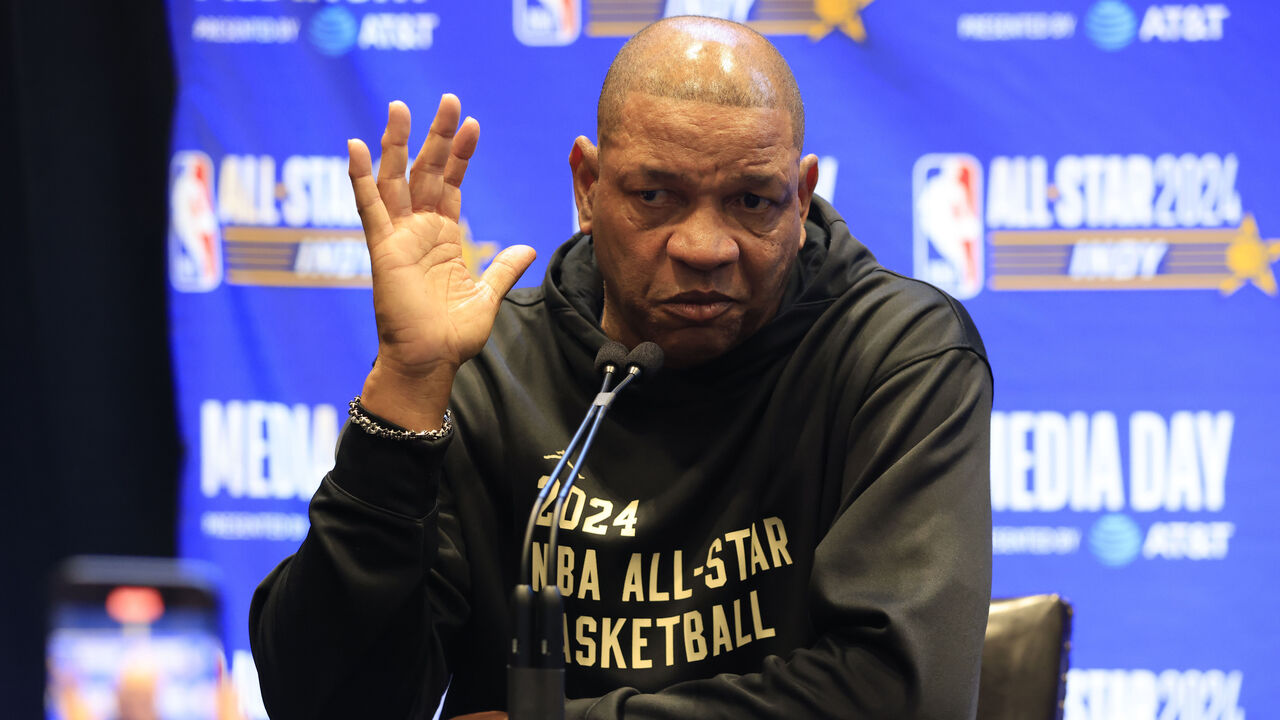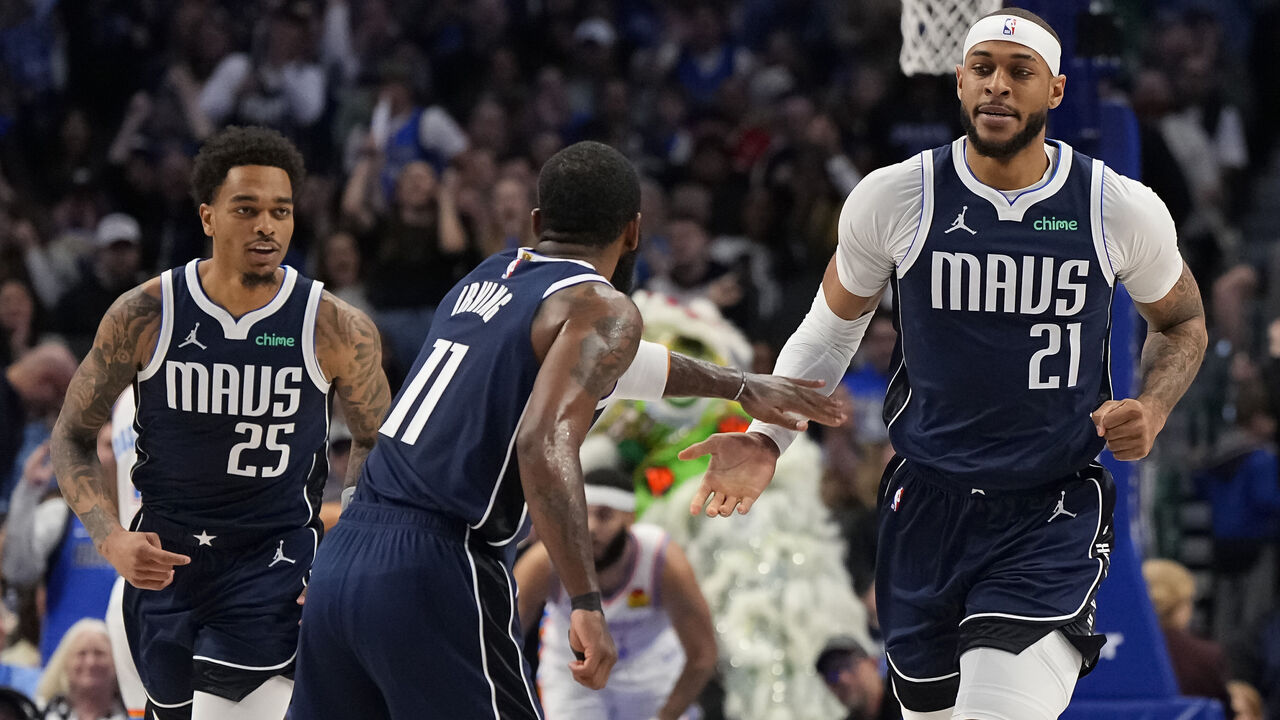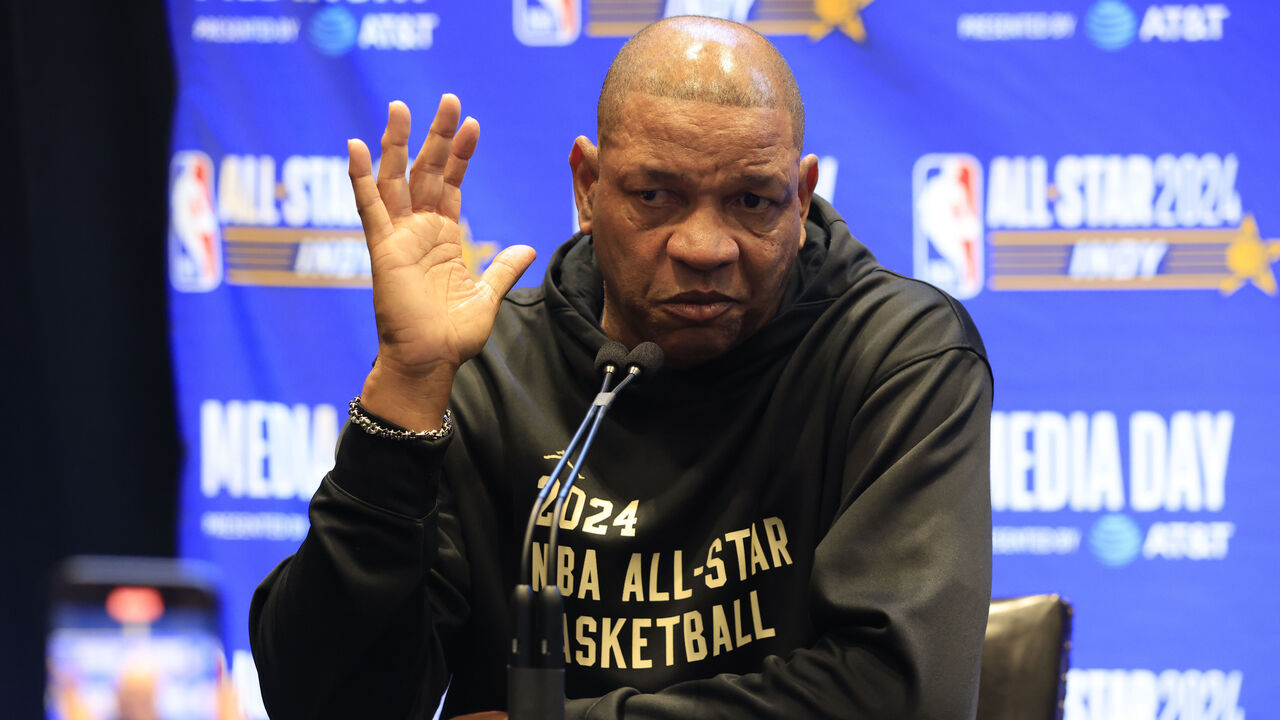6 biggest questions heading into 2nd half of NBA season
The second half of the NBA season is set to get underway Thursday with a packed slate. Here’s a look at six of the biggest questions with two months left in the campaign.
How far can healthy, reloaded Knicks go?
After adding OG Anunoby, the Knicks looked borderline unstoppable, dropping just two of the ensuing 14 games that the former Toronto Raptors forward appeared in. During that stretch, New York was nearly at full strength – Mitchell Robinson was its only main-rotation absence – and the team smothered opponents with a league-best 104.1 defensive rating (though the Cleveland Cavaliers’ 104.2 mark during that same time frame was very close).
However, the Knicks have fallen off a cliff since. With the All-Star break providing only temporary reprieve from a four-game losing skid, the team is still without Anunoby, Robinson, and Julius Randle for the foreseeable future. And the Knicks’ campaign resumes Thursday on the road against the Philadelphia 76ers before they return home to host the league-leading Boston Celtics. But all of that only makes New York’s season more intriguing. When healthy, the Knicks suddenly appeared destined for the conference finals, at minimum. Will they recover that momentum when their key personnel return? Or will this year be another what-if for those in basketball’s mecca?
Can Doc fix struggling Bucks?

The Doc Rivers era is off to a bumpy start as the Milwaukee Bucks are 3-7 with the former NBA Coach of the Year at the helm. Two of those defeats came against the cellar-dwelling Portland Trail Blazers and a Memphis Grizzlies squad missing virtually all of its key rotational pieces, including Jaren Jackson Jr. While the record isn’t pretty, the Bucks have shown some growth defensively, which was the club’s Achilles heel under Adrian Griffin.
Since Rivers took over Jan. 29, Milwaukee owns the league’s 10th-best defensive efficiency. The Bucks held both the Charlotte Hornets and Denver Nuggets beneath 100 points after accomplishing the feat just once in their first 43 games under Griffin. Unfortunately, the offense hasn’t experienced the same improvement: Milwaukee is scoring nearly nine fewer points per 100 possessions since the midseason coaching change.
Damian Lillard entered the All-Star break shooting 24.4% from deep and 37.2% from the field over his last five games. Meanwhile, Khris Middleton’s ankle injury leaves the Bucks without one of their top shot-creators. Adding Danilo Gallinari’s floor-spacing to complement Giannis Antetokounmpo makes a lot of sense, but it won’t fix the team’s recent scoring woes. Perhaps the best solution is running more pick-and-rolls with Lillard and Antetokounmpo. The Bucks will only go as far as their two stars will take them, and the two-man game may get the offense back on track.
Can Thunder, T-Wolves upset West’s balance of power?
Since 2014, the last championship of a bygone San Antonio Spurs era, only nine different franchises have made the Western Conference finals. That’s mostly a credit to the Golden State Warriors’ unfathomable run, but a few other teams made multiple appearances in that span too, including the Houston Rockets, Denver Nuggets, and even the Oklahoma City Thunder early on. That version of the Thunder, however, is a far cry from today’s Thunder, who look set to dismantle the hierarchy of the last few seasons in the West – and they’re not alone.
The youngest Minnesota Timberwolves fans hadn’t even been born the last time their team vied for a spot in the NBA Finals. Minnesota’s last conference finals appearance, with Kevin Garnett and Sam Cassell leading the charge in 2004, was also the last time it escaped the first round at all. Now Chris Finch’s team has optimized its two-big lineup around rising star Anthony Edwards, and both Oklahoma City and Minnesota are primed to have at least first-round home-court advantage in the postseason. This year’s sample size is now sufficient for us to believe in both teams’ regular-season success – but can they truly make a statement by bouncing some heavyweights in the playoffs?
Can Mavs’ boosted frontcourt keep them out of the play-in?

The Dallas Mavericks headed into the All-Star break riding a six-game win streak and just a game back of the Phoenix Suns and New Orleans Pelicans for fifth in the West. A healthier roster played a role, but trade-deadline acquisitions Daniel Gafford and P.J. Washington can’t be overlooked. The frontcourt duo is averaging a combined 23.7 points and 17.3 boards over its first three appearances, and the Mavs have a plus-11.7 net rating in lineups featuring both Gafford and Washington.
Gafford gives Dallas some much-needed shot-blocking, a strong presence on the glass, and another lob threat in pick-and-roll actions. Washington, meanwhile, is a career 35.7% 3-point shooter. If he can rediscover his outside stroke, that will provide even more driving lanes for Luka Doncic and Kyrie Irving to exploit.
The Mavs boast a more balanced roster with Gafford and Washington in the fold. With Doncic playing at an MVP-type level and Irving having one of the best shooting seasons of his career, the team is poised to escape the play-in tournament and push for home-court advantage in the first round of the playoffs.
How far will 76ers fall without Embiid?
The Philadelphia 76ers hit the All-Star break at just the right time. Nick Nurse’s squad dropped nine of its last 12, with much of that misery coming during Joel Embiid’s knee-related absence. Embiid is almost certain to miss considerable time, though the team has been tight-lipped on details, nebulously labeling the concern a “meniscus injury.” However, the glass-half-full interpretation for Philly is that the injury hasn’t been defined as season-ending.
Regardless, the 76ers need to do a better job of adjusting to life without Embiid in the meantime. In the eight games following their talisman’s last appearance on Jan. 30, Philly posted the third-worst defensive rating in the league, allowing 122.6 points per 100 possessions, and its offensive rating without the now-mathematically ineligible MVP front-runner is a middle-of-the-road 115.6 (16th). Before Embiid’s indefinite shutdown, the Sixers were a top-five offensive (119.1) and a No. 8-ranked defensive (112.6) squad – one of only four teams to be top 10 in both categories. Embiid’s missing interior defense has arguably been the biggest difference overall; without him, 76ers opponents are shooting 58.9% on defended 2-pointers, the fourth-highest such mark in the NBA. Before Embiid’s injury, however, opponents shot a much more modest 54.3% on non-threes.
Have Warriors turned the corner?

The Warriors seemed to be on the ropes after a 145-144 double-overtime loss to the Los Angeles Lakers on Jan. 28 dropped them to a season-worst five games below .500. They’ve since rattled off eight wins in 10 contests to lift themselves back into the play-in tournament field.
Several factors propelled Golden State’s turnaround. Stephen Curry took his game to another level, averaging 30.9 points and shooting 51% from the field – including a 48.1% clip from distance. During that aforementioned 10-game span, he became the first player in NBA history to drain at least seven triples in four consecutive contests. Draymond Green has provided a spark on both ends since returning to the lineup. Even Andrew Wiggins experienced a resurgence following a rough start to the campaign.
Young guns Jonathan Kuminga and Brandin Podziemski also picked up the slack with Klay Thompson struggling. Kuminga is having arguably the most consistent stretch of his career, tallying nearly 20 points per game on 54.6% shooting. Meanwhile, Podziemski’s versatile skill set earned him a starting gig as well as closing minutes. The rookie guard out of Santa Clara is averaging 12.6 points, 7.2 boards, and 6.3 assists to go along with a 37.1% mark from deep over his last 10 appearances.
Don’t be surprised if the Warriors continue to climb the standings, especially once Chris Paul and Gary Payton II rejoin the team for the stretch run.


